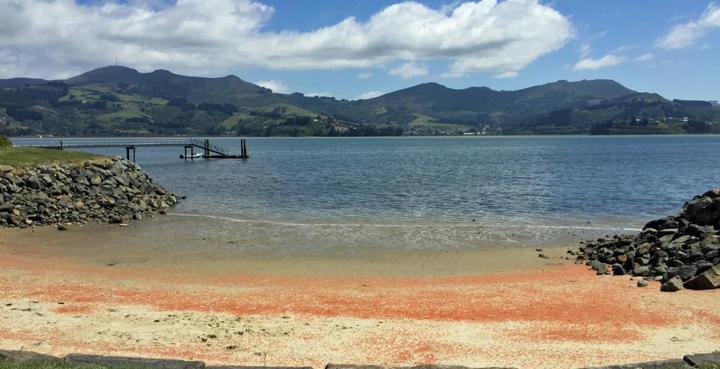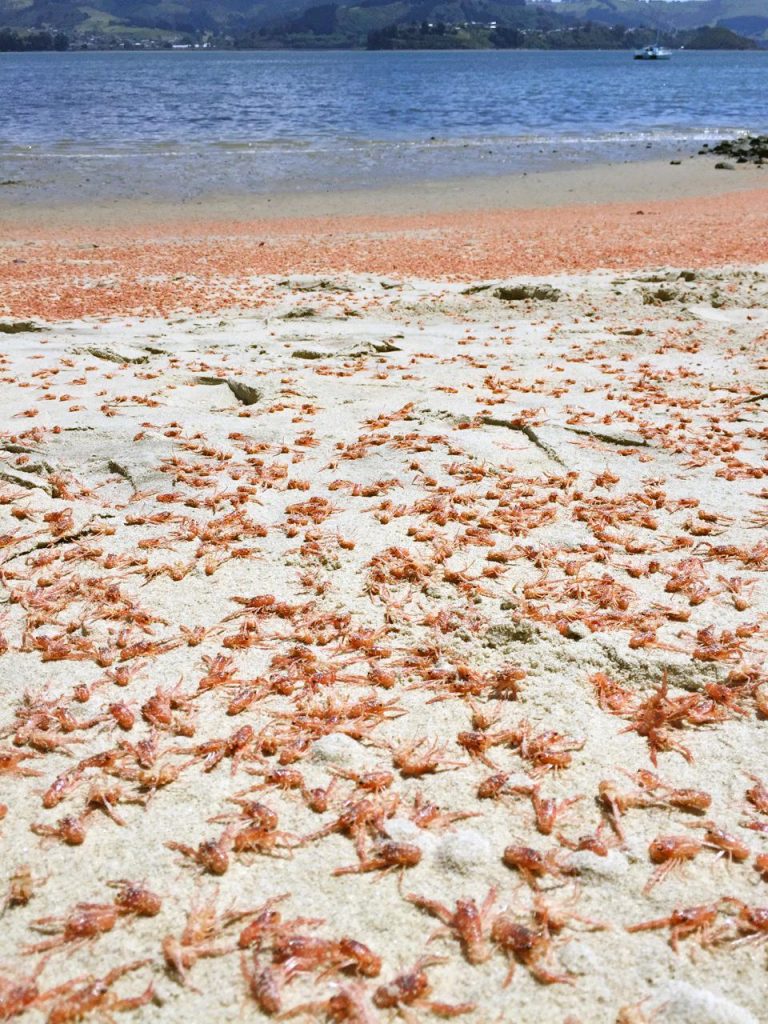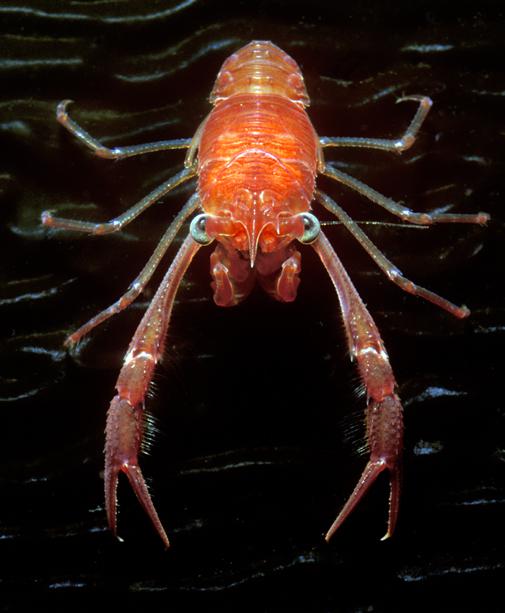The sandy beaches of Otago in the deep south of New Zealand have turned blood red after millions of squat lobster died in a series of mass strandings.
Locals in the small coastal communities of Broad Bay and Edwards Bay, who have seen whole swaths of coastline saturated in colour, reported the strange phenomenon this week.

Dr John Zeldis, a marine ecologist at the National Centre for Water and Atmospheric Science, said the red tinge was produced by the corpses of munida gregaria.
The crustaceans cling to the sand at high tide – an instinctive “settling” behaviour for breeding – and then perish when the low tide retreats.
Over the decades Zeldis has seen patches of dead squat lobster 20-30cm thick, landing on Otago beaches any time from December through to June, and extending as far south as the Catlins and as far north as Banks Penninsula.
This year local people have reported numerous beaches turning red, meaning that adult squat lobster are refusing to give up their breeding grounds on the seafloor.
This leaves millions of teenage squat lobster with nowhere to breed. The strong instinct to settle and “cling” to surfaces leads to their demise.

“The settling behaviour is critical to their life cycle,” said Zeldis, who studied the Dunedin creatures for six years, saying he was drawn to their unusual habits.
“If they try to settle into the niche of adults that aren’t ready to move on, there’s a whole lot of aggression that goes on,” he said.
“Eventually they settle on to the bottom of the sea 30-40m deep, and they live there for the next couple of years. That’s where they spawn and make the next generation so that behaviour of wanting to settle is innate.”

Although people are sometimes alarmed by the vivid red of the dying animals, Zeldis said the dead squat lobster represented a “tiny” fraction of the overall population, which remained healthy despite a planet – and ocean – in flux.
More animal mass die-offs on Strange Sounds and Steve Quayle. [NIWA, Guardian]












